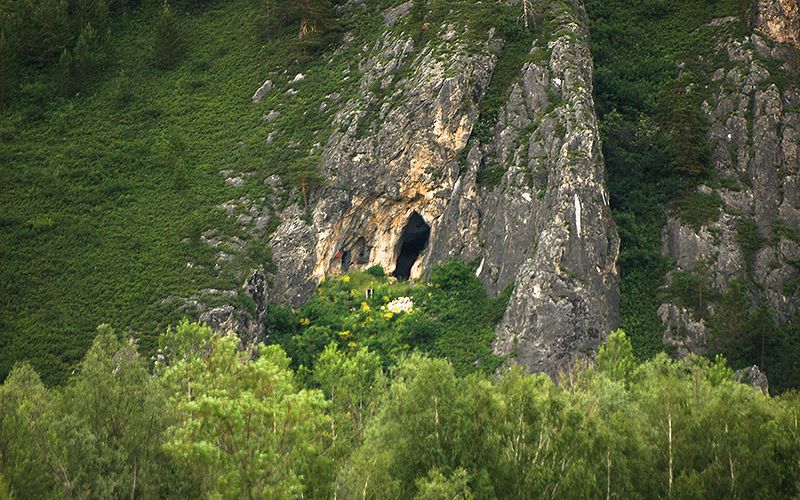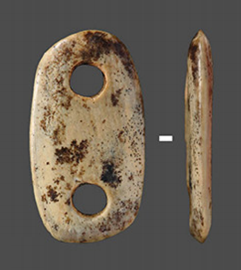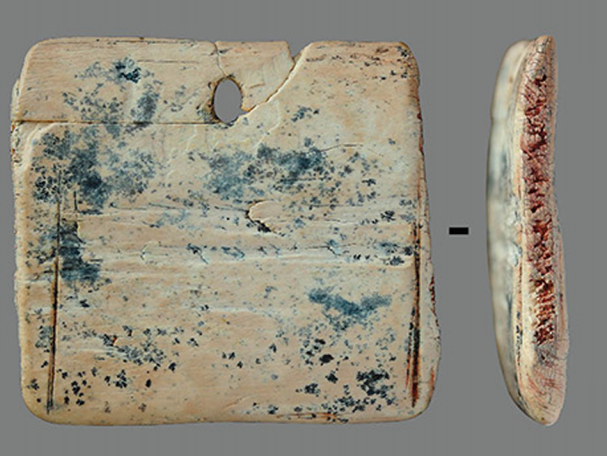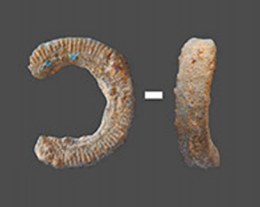Strashnaya Cave
Multi-layered archaeological site - the Strashnaya Cave is located within the northwestern Altai in the middle reaches of the r. Inya (the Charysh river basin), near the confluence of the river Tigirek. The absolute level of the river at the foot of the cave is 470 m. The cave has a south-eastern exposure and is located at an altitude of 40 m from the river level.
As an archaeological site, the Strashnaya Cave has been known since 1966. The first exploration work on the study of the site was conducted by N. D. Ovodov in 1969–1970. A special study of archaeological material and cave sediments was undertaken in 1989–1994. under the leadership of A.P. Derevyanko. After a break in the study of the site, the study of the Strashnaya Cave was resumed under the direction of A. N. Zenin (2006–2009). In 2013–2015 Interdisciplinary studies of the cave materials were conducted under the leadership of A. I. Krivoshapkin.
From 2013–2017, archaeological investigations at the Strashnaya Cave in north-western Altai, have revealed Middle and Upper Palaeolithic lithic assemblages, human remains and unique bone tools and ornaments. A total of 13 lithological layers were identified, with an overall thickness of approximately 10 m. Layers 1 and 2 are dated to the Holocene, and the underlying layers to the Pleistocene. The Pleistocene layers comprised seven Middle Palaeolithic layers. Include blade and bladelet prismatic cores, and several radial and Levallois cores. The tool kits comprise end-scrapers, retouched blades and flakes, splintered pieces, borers and side-scrapers – The bone industry from horizons 31a, 31b and 33 includes: ornaments, bone tools (needles, an intermediate tool, an awl, a tool made from red deer antler and three fragments of hunting weaponry.The ornaments are intentionally manufactured pendants and buttons , along with several fossil mollusc shells.
The third tradition, from horizon. 31a and dating to 20 kyr BC, represents the advanced Upper Palaeolithic with bladelet technology, personal ornaments and bone tools. To date, bone ornaments (red deer incisor pendants) and bone tools (needles) have only been known in the early chronological context in Denisova Cave.
Collection
Publications
Derevianko A. P., Zenin A. N. The Mousterian to Upper Paleolithic Тransition though the Example of the Altai Cave and Open air Site // Suyanggae and Her Neighbours. – Chungju, 1997. – P. 241–255.
Zubova A.V., Krivoshapkin A.I. & A.V. Shalagina, 2017. Нuman teeth from the Strashnaya Cave, the Altai Mountains, with reference to the dental variation in Stone Age Siberia. Archaeology, Ethnology and Anthropology of Eurasia 45: 136–145 https://doi.org/10.17746/1563-0110.2017.45.3.136-145






